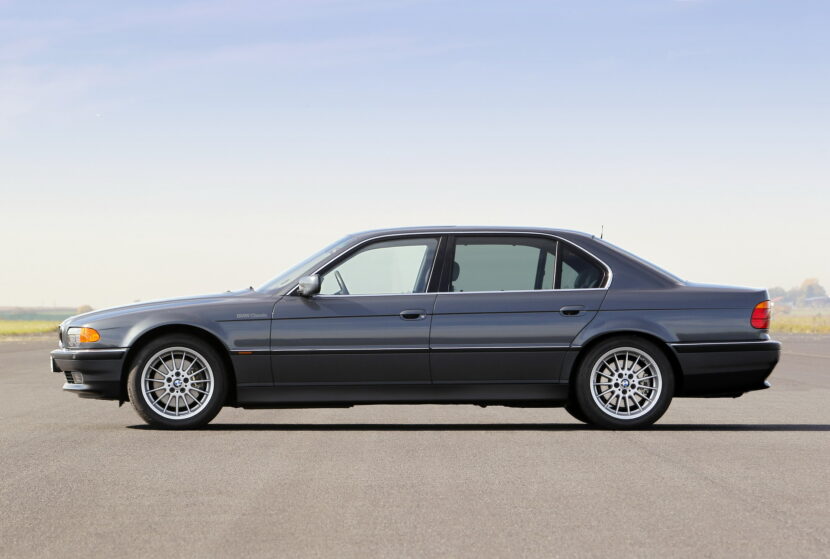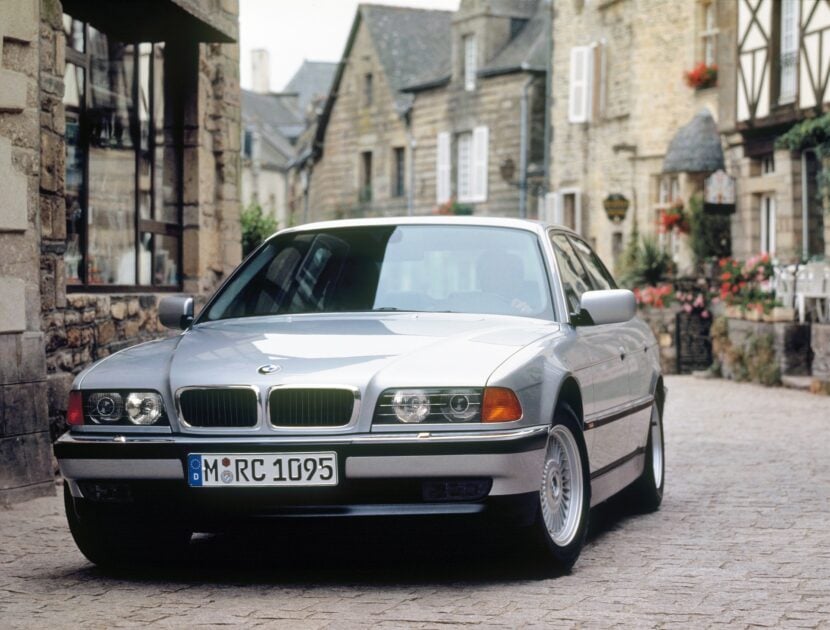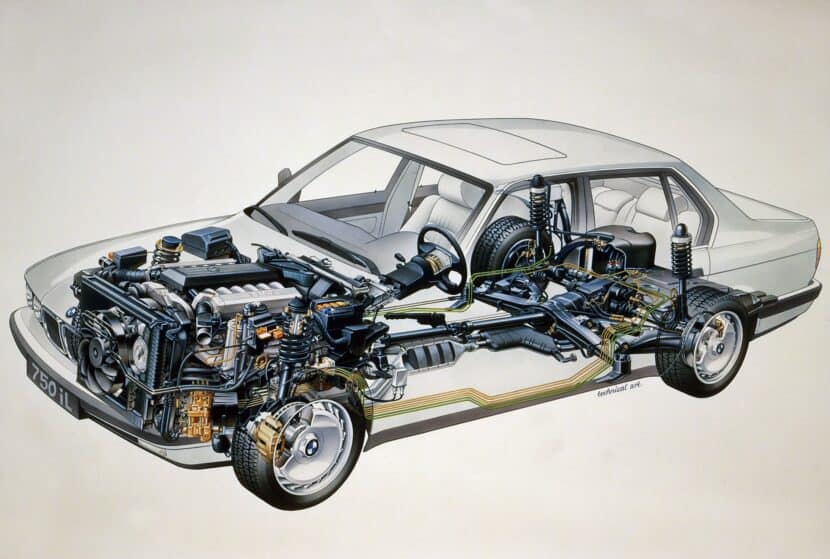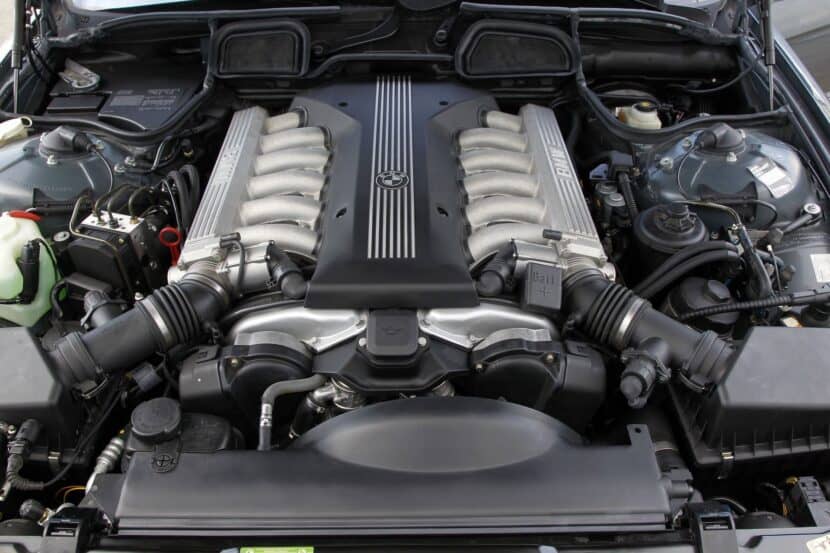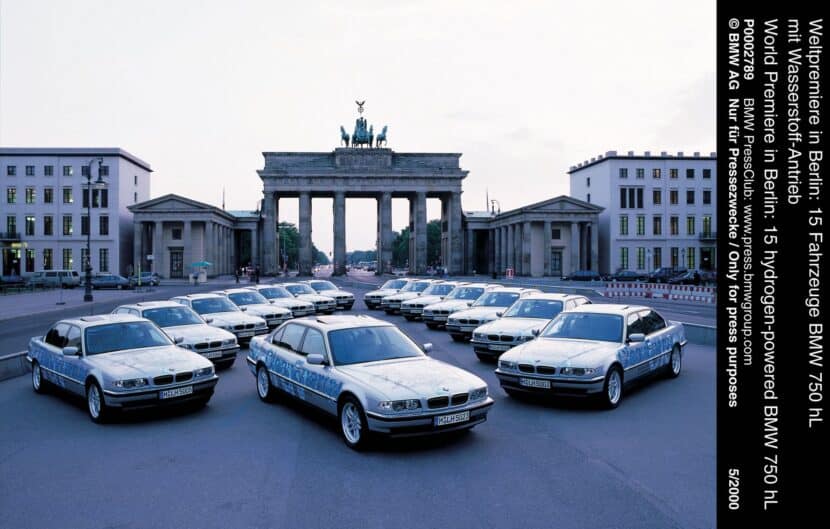It was someone at BMW who justified the all-new E38 7 Series – launched thirty years ago this year – by suggesting that customers in that class would buy a car for a second time, but not for a third. Whatever the official line was, the previous E32 7 Series launched in late 1986 had reached the end of its road. It was still a very good car, of course, and the 1992 replacement of the ancient M30 straight-six, launched in 1968, with all-new 32-valve M60 V8 units had transformed it into an exceptionally good car. Added to those were new five-speed automatic transmissions, plus the usual manual gearbox option, and the 7 Series offered something its rivals didn’t.
However, both BMW and Mercedes had been stung by the Lexus LS400, the otherworldly large saloon from Toyota that seemingly appeared out of nowhere and pretty much beat the Germans at their own game. Many thought it was the better luxury car, and it certainly made both firms stop and rethink.
Engineering Marvels: Under the Hood of the E38
The 1994 E38 shared very little with the E32, although the engines and transmissions were essentially carryovers. The 3-liter V8 with 218 bhp was okay; the 4-liter with 286 bhp was something else again, and the 326 bhp M73 V12 was ever so slightly pointless when the 740i was so good. In the E32, the 740i had rendered the 300 bhp 5.0 750i obsolete; its old single cam per bank V12 and four-speed automatic were already looking somewhat old hat. The revised V12 and five-speed automatic certainly improved the 750i, but really, the 740i and its superior fuel economy won the day.
The E32 was a handsome car, albeit a bit heavy around the rear quarters, and the old four separate headlights were looking distinctly old, this being the era of the E36. The E38 repeated the trick BMW had pulled when it replaced the original E21 3 Series with the E30. Everything was in about the same place, but it looked leaner and fitter. Some said it looked bland, and there’s something to be said about that – it was certainly restrained and elegant compared to the W140 S Class that even Mercedes thought was a bit too big. The 1994 Audi A8 was launched around the same time; this being the first big Audi to be a success.
Engine apart, the E38 took nothing from the E32. Replacing the semi-trailing arm independent rear suspension was an all-new multi-link setup that was nothing like either the E36 Z Axle or the E31 8 Series setup. Upfront, an all-new version of the familiar McPherson strut layout was used, and unusually, BMW retained the old-style steering box as opposed to a rack and pinion – they would also use this on the V8 versions of the 1996 E39 5 Series. CanBus and I-Bus electronics were used, and the fuel tank moved to the area under the rear seats. Bizarrely, they used a steel tank as opposed to the plastic tanks used on the E34 and E36 – this would later be a thorn in the side of E38 owners as the tank does like to rust around the seams.
As well as the three petrol engines, a diesel was also launched in 1994, this being the dreaded 725tds. Undoubtedly a stop-gap engine, the M51 developed 143 bhp and was just about enough for a 5 Series, and even then it was no ball of fire. In the E38, it was a mobile roadblock, although it was okay when cruising on the motorway. Much better would come later on.
Engineering Marvels: Under the Hood of the E38
The first significant change to the E38 occurred in 1996 when both V8 engines were replaced and a new model was added. Replacing the 730i and 740i were the 735i and the 740i. The new M62 engines were heavily revised versions of the previous M60 – Alusil bores were phased in to replace the Nikasil coatings, single-row timing chains replaced the previous Duplex, and an ECU-controlled thermostat ensured rapid warm-up and let the engine run rather hot during part-load cruising for greater economy.
The last two changes would again be a problem in later years as the cars got older, with broken timing chain guides and cooling system dramas. The 735i was good for 235 bhp, and the 740i was now a 4.4-liter with the same claimed 286 bhp but more torque. The on-road difference between the 740i and 750i was narrower than ever, yet the V12 car had that edge on turbine-like power delivery. Elsewhere, the automatic gearboxes gained the new Steptronic system for manual gear shifting should you be in the mood.
All new though was the 728i, a new base model with the 193 bhp M52 straight-six. This engine was the alloy block development of the 1992 Vanos M50 2.5 unit with a longer stroke and 2.8 liters. In terms of performance, it was surprisingly good, and many previous 730i owners transferred their allegiance to the 728i when the time came. In Europe and the UK, it was good enough to make the 735i pretty much redundant – it was a good car, of course, but if you are fueling a V8, you wanted the full-fat 740i with the proper amount of wallop when you pressed the loud pedal.
Facelifts and Upgrades: Evolution in Design and Performance
Late 1998 saw the E38’s one and only facelift. The headlights and tail lights were lightly restyled along with new wheels, slimmer front repeaters, bolder front grilles, and some minor interior trim changes. Mechanically, an all-new ABS system was installed, mirroring the E46 and revised E39 with ASC or the option of DSC, and the engines were revised again. The 728i’s M52 gained twin Vanos, whilst the M62 V8’s gained Vanos and a new water-cooled alternator – the V12 in the 750i remained pretty much as before.
A Sport model was also released on most engine sizes (except the 725tds), and this included M Sport suspension, Style 37 M Parallel 189-inch alloy wheels, clear indicators, Contour or Sport seats, and black gloss shadowline exterior trim to replace the chrome-style stainless trim. They also featured a black headliner and darker wood interior trim. Xenon headlights became an option shortly afterwards. We talked about the E38 diesels earlier, and whilst the 725tds soldiered on until early 2000, a new 730d arrived in early 1998 with the all-new M57 3.0 diesel and 180 bhp. That was boosted to 190 bhp for 1999, but the big news was the 740d.
Diesel Dilemma: The Introduction of E38 Diesel Models
BMW wanted to beat Mercedes to the first V8 twin-turbo diesel, and it did just that in late 1998 with the M67 engined 740d. This was a kind of prototype for the 2002 E65 version, but it was a very impressive engine. Using an iron cylinder block and alloy cylinder head designs and other parts from the 320d M47, BMW built under 3000 of these 245 bhp cars that sported 560 Nm of torque (more than the V8 M5 and 750i) and a 150 mph top speed as well as superior fuel economy to the 740i. With common rail technology, it was certainly a superb engine and its tall final drive gave it long motorway legs with 100 mph requiring just 2600 rpm.
The Final Act: E38’s Last Hurrah and the Arrival of E65
By 2000, the E38 was on the home run, and the E65 was being finalized. Even so, the E38 was improved again with a new satellite navigation system, body-colored rocker panels and lower bumper sections, and the option of adaptive cruise control.
Last but not least, BMW trialed fifteen 750hL (long wheelbase) cars in Berlin, starting in May 2000. Running on both petrol and hydrogen (switchable between the two), the otherwise standard M73 5.4 V12 gave 200 bhp on hydrogen, giving it performance similar to a 728iL. The V12 used different inlet manifolds with hydrogen injection ports, and the hydrogen tank was fitted in the trunk directly behind the rear seat bulkhead, holding 140 liters at a temperature of minus 253 degrees C. The 750hL also used a 7hp fuel cell as an auxiliary power unit to boost the complex electrical system. The cars were later trialed again in Dubai, Milan, Brussels, LA, Tokyo during the Clean Energy Tour of 2001 before being returned to BMW.
The E65 replaced the E38 in late 2001, and everyone has their opinions on it. Me? I quite admired the bravery of the E65 and think the original pre-facelift 745i’s will gain cult status in not very many years. The E38 was the last traditional 7 Series, but time hasn’t been so kind to them as used cars. The early M60 cars were definitely more robust, using a lot of already proven E32 and E34 technology – the things that afflict the later cars, such as problems with the timing chain guides, cooling system, ABS module, and instrument panel pixels, rarely troubled those early cars. Ask anyone about E36 versus E46 reliability in old age, and you can see a pattern was being set.
Legacy and Impact: E38’s Enduring Presence
Today, a really good rust-free example is worth having. They are still a superb car to drive, and as long as they are clean and factory standard – so no stupid wheels, springs, etc. – they have that classic look. Buy one from a hot state or Japan because European and mid-west cars are going to be too rusty. My choice? A really nice 4.0 M60 740i or a later 750i Sport. Both can be bought in good condition for the price of a late model F30 328i, and who turns to look as one of those goes by?

